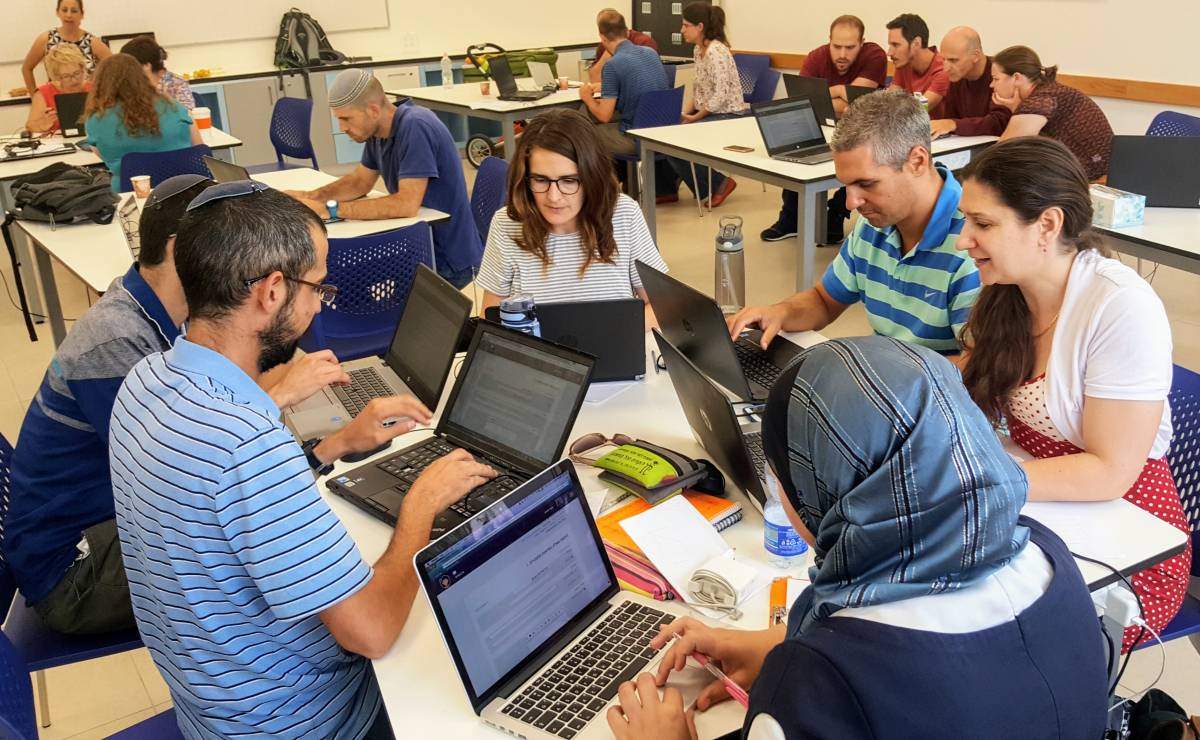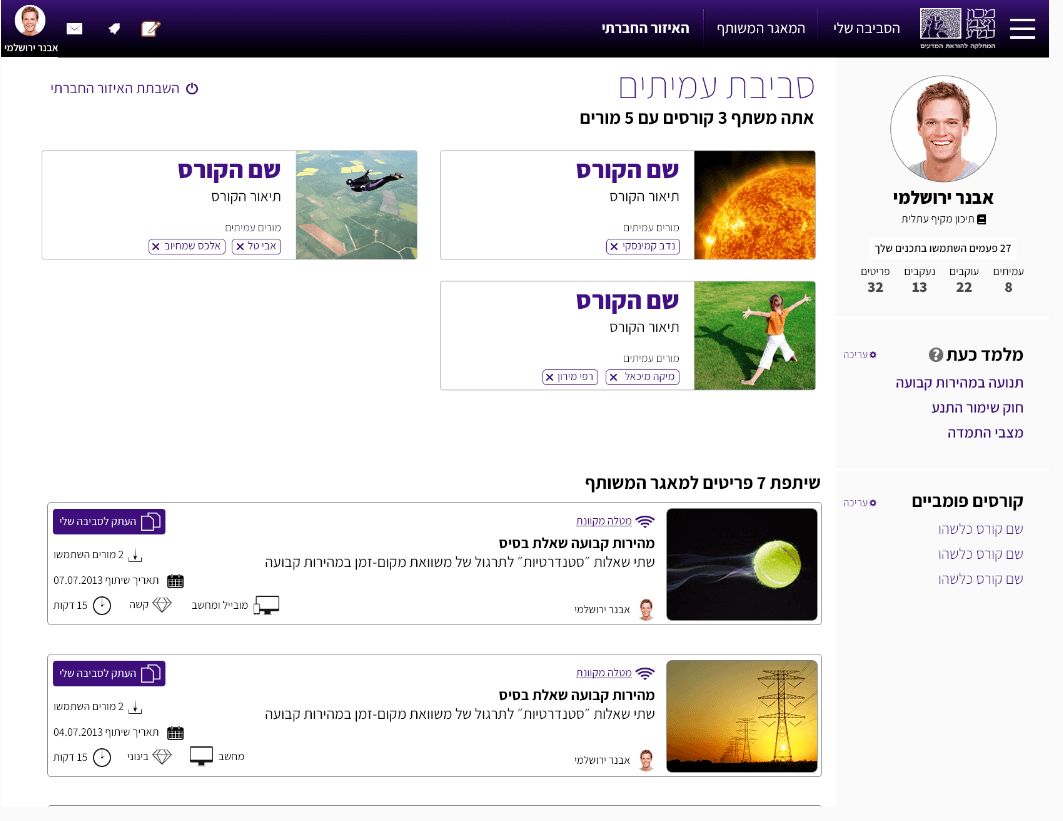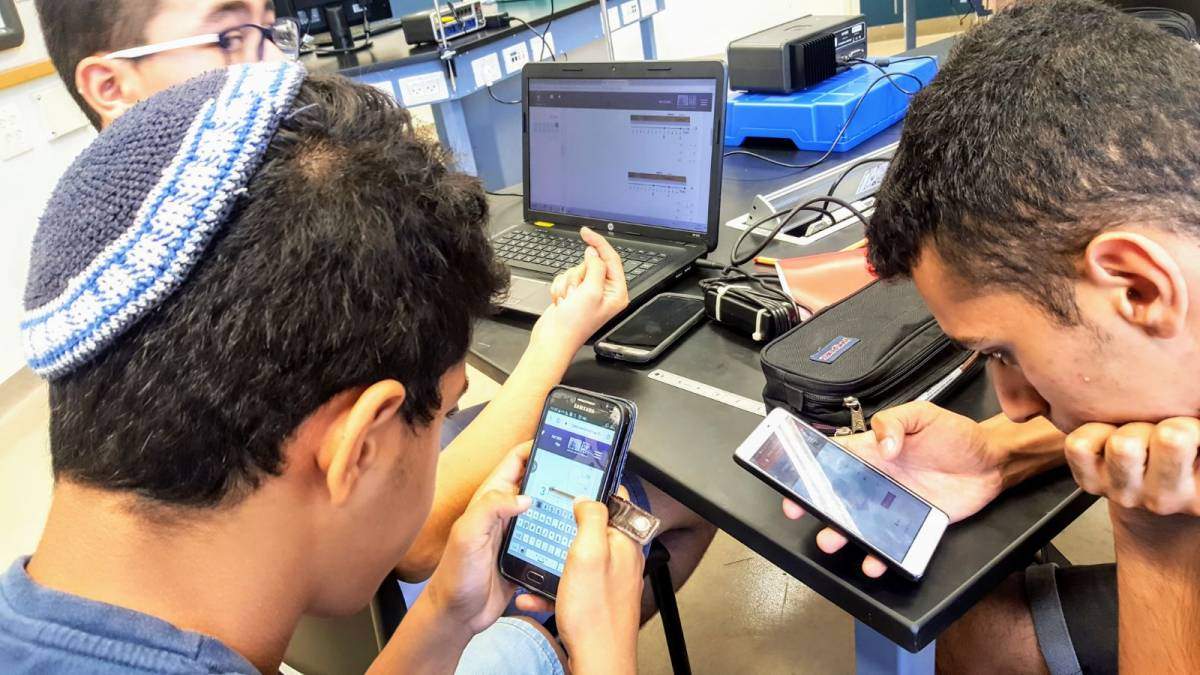Are you a journalist? Please sign up here for our press releases
Subscribe to our monthly newsletter:

Newton and Einstein did not have the benefit of social media, but a new online initiative is bringing their work to hundreds of high school students in new and interesting ways. Teaching materials about the works of these giants of science, and on numerous other topics in physics, are part of an interactive learning management system that, among other ends, will serve as a social network for science teachers. The system, called PeTeL – an acronym for Personalized Teaching and Learning – developed at the Weizmann Institute of Science, will enable teachers to tailor teaching and learning to each and every student.
“When teachers enter a classroom to teach a new topic, they usually can’t tell in advance how much the students already know about this topic,” says Prof. Anat Yarden, head of Weizmann’s Science Teaching Department. “The goal of PeTeL is to help teachers ‘diagnose’ the problems students may have in understanding the material – and plan the lesson accordingly.”
The ultimate goal: to help teachers select the materials that will enable students to make progress in an optimal manner, in accordance with the computerized diagnosis. “For example, if a number of students hold a misconception about a certain topic, how do we deal with this misconception? Which tools should we choose from the digital database?” asks Prof. Bat Sheva Eylon. “Those are precisely the kinds of question investigated within the framework of PeTeL.” The system’s digital environment supplies teachers with immediate access to hundreds of assignments, activities, videos, lesson plans and additional materials uploaded by other teachers.

As befits a social network, PeTeL facilitates sharing and provides teachers all over Israel with easy means of communication. A feature termed “Collegial Environment” allows teachers to share with others not only diagnostic tools and teaching materials they develop, but also their insights into matching appropriate materials to results of diagnosis. Among additional features are “Teacher Colleagues,” which enables teachers to request access to lesson plans of others, and “Follow a Teacher,” which alerts them to material posted by selected colleagues.
PeTeL also lets teachers communicate with students via a personal digital space, in which they can assign tasks during class, give out homework or conduct tests. Students enter the system via smartphones, tablets or laptops, and receive immediate feedback on their work.
I used to lose about 20% of students in the school year, but since I’ve started using PeTeL, no one has dropped out
In the past two years, the Weizmann scientists focused on developing PeTeL for physics teachers. Says Ayellet Shaked from Nahalal, one of about 40 physics teachers from “teacher learning communities” who were involved in the development of PeTeL in the past year: “It’s very convenient that PeTeL brings together everything – teaching materials and such tasks as filling lab reports or assigning homework.” Shaked also says that the use of interactive digital tools renders the homework more interesting for students.
Noam Haber, a physics teacher from Sderot, says that digital monitoring within PeTeL helps prevent students from dropping out. “Students know they are being monitored. If they miss a certain number of lessons or fail to do homework three times in a row, the system sends an alert. In the past, I used to lose about 20% of students in the course of the school year, but since I’ve started using PeTeL, no one has dropped out.”
Haber also reports that PeTeL has helped him accomplish an impossible mission: holding a test while he himself was away from the school. He was in Makhtesh Ramon, accompanying eleventh-grade students on their annual field trip, but in the evening, before going to sleep in his tent, he sent from his laptop – via PeTeL – a test that a replacement teacher administered the following day to Haber’s ninth- and twelfth-grade students. “Thanks to PeTeL, I don’t have to stop teaching if I’m called for reserve duty in the army or go on a trip with other students,” Haber says.

Next year, PeTeL will open up to dozens of additional physics teachers in Israel. In parallel, Weizmann scientists have already started developing the system for teachers of chemistry, and in the future, it will also be available to biology and mathematics teachers – in Hebrew and Arabic. Taking part in the development of PeTeL are physics teachers from the Hemda Science Education Center in Tel Aviv and the Schwartz-Reisman Science Education Center in Rehovot.
PeTeL’s development in physics is led by graduate student Asaf Bar Yoseph under the guidance of Prof. Bat Sheva Eylon. PeTeL’s development in chemistry is led by Prof. Ron Blonder, and in biology by Prof. Anat Yarden. They are being assisted by a program development team headed by Marina Armiach, and will soon be joined by a big data analysis team headed by Dr. Giora Alexandron.
PeTeL Personalized Learning and Teaching is supported by the Henri Gutwirth Fund for Research; the Foundation for Higher Education and Culture; and Gideon Hamburger.